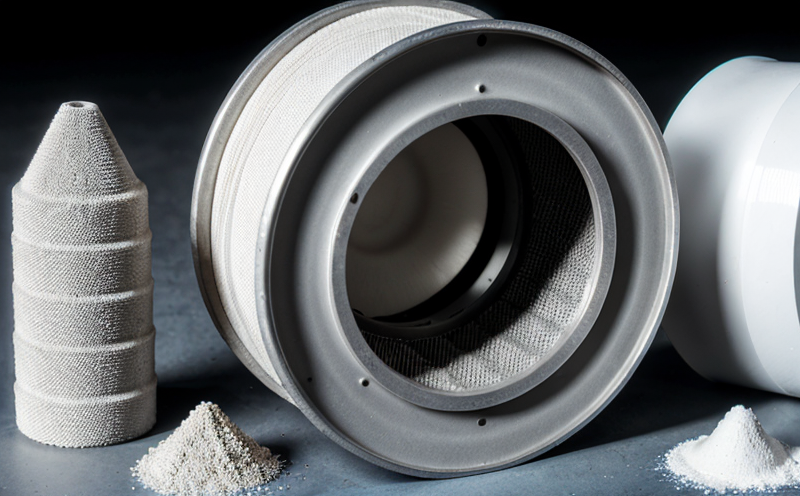EN 13501 Fire Classification Compliance Testing of Marine Products
The European standard EN 13501-1:2016, "Building materials and products intended for use in construction work - Part 1: Classification," sets the framework for assessing fire performance, including the classification of building materials used in marine environments. This testing is essential to ensure that materials comply with stringent safety regulations in various sectors like maritime, naval architecture, and offshore industries.
Marine products subject to this test include structural components such as bulkheads, decks, and doors, as well as non-structural items like insulation materials used within the hull of ships. The standard evaluates fire resistance by measuring the time it takes for a specimen to lose its integrity or stability in a specified fire exposure scenario.
Our service at Eurolab focuses on providing comprehensive EN 13501-1 compliance testing for marine products, ensuring that your materials meet the stringent requirements set by international standards. This includes assessing the material's ability to maintain its structural integrity and resist fire spread under conditions similar to those encountered in real-world scenarios.
The testing process involves several critical steps:
- Selection of appropriate fire test apparatus
- Preparation of the specimen according to ISO 12944-5:2017 for marine environments
- Conducting the flame impingement test in accordance with EN 13501-1
- Evaluating compliance against specified fire ratings
- Generating detailed reports summarizing test results and recommendations
The results of this testing are crucial for ensuring that marine products comply with the stringent requirements set by international standards. This not only enhances safety but also ensures regulatory compliance, which is essential for product certification and market entry.
| Fire Test Parameters | Acceptance Criteria |
|---|---|
| Time to lose integrity or stability | Measured in minutes; must not exceed specified limits according to EN 13501-1 |
| Smoke and heat release rates | Must comply with the limits set by EN 13501-2:2016 for flammability characteristics |
| Flame spread | Must not exceed the flame spread index thresholds defined in EN 13501-1 |
The fire classification of a marine product is typically expressed as a Class X-Y, where 'X' refers to the time limit (in minutes) and 'Y' indicates the smoke production class. Compliance with these classifications ensures that the material can be used in marine environments without compromising safety.
Our team at Eurolab uses state-of-the-art equipment and follows international standards meticulously to ensure accurate and reliable testing results. We have conducted numerous tests for clients across various sectors, including shipyards, naval architecture firms, and offshore operators.
Eurolab Advantages
At Eurolab, we pride ourselves on delivering exceptional service in marine product fire classification compliance testing. Our advantages include:
- Comprehensive Testing Capabilities: We offer a full range of testing services tailored to the specific needs of marine products.
- Expertise and Experience: Our team comprises highly qualified professionals with extensive experience in fire safety testing for various sectors.
- Precision Instruments: Utilizing advanced equipment, we ensure precise and accurate test results.
- Regulatory Compliance: We stay updated on the latest standards and regulations, ensuring that our clients' products meet all relevant requirements.
- Timely Delivery: Our efficient processes allow for quick turnaround times without compromising on quality.
- Customer Support: We offer comprehensive support throughout the testing process to ensure a seamless experience for our clients.
Choosing Eurolab means working with a partner who understands the unique challenges of marine product fire classification and is committed to delivering high-quality, reliable services.
Why Choose This Test
- Enhanced Safety: Ensures that materials used in marine environments meet strict fire safety standards.
- Regulatory Compliance: Helps clients avoid non-compliance penalties and ensures market access for products.
- Reputation Boost: Demonstrates a commitment to quality and safety, enhancing your brand's reputation.
- Competitive Edge: Differentiates your product from competitors by meeting the highest fire safety standards.
- Customer Confidence: Builds trust with end-users who are assured of the safety and reliability of their products.
- Risk Mitigation: Reduces potential risks associated with non-compliant materials in marine environments.
The EN 13501-1 fire classification compliance testing is a critical step in ensuring that your marine products meet the highest standards of safety and reliability. By choosing this test, you are investing in the long-term success and reputation of your business.
Use Cases and Application Examples
The EN 13501-1 fire classification compliance testing is applicable to a wide range of marine products used in various sectors. Below are some use cases:
| Product Type | Description |
|---|---|
| Bulkheads | Structural components that separate different areas within the ship, ensuring fire separation. |
| Decks | Horizontal surfaces providing walking space and support for the ship's structure. |
| Gangways | Passageways connecting ships to shore or other vessels. |
| Cabinetry | Non-structural items such as doors, cabinets, and panelling used within the ship's interior. |
| Insulation Materials | MATERIALS USED TO INSULATE TANKS AND OTHER SPACES WITHIN THE SHIP'S HULL. |
The testing process involves selecting appropriate specimens and conducting flame impingement tests in accordance with EN 13501-1. The results are then analyzed to determine the fire classification of each product, ensuring compliance with international standards.





